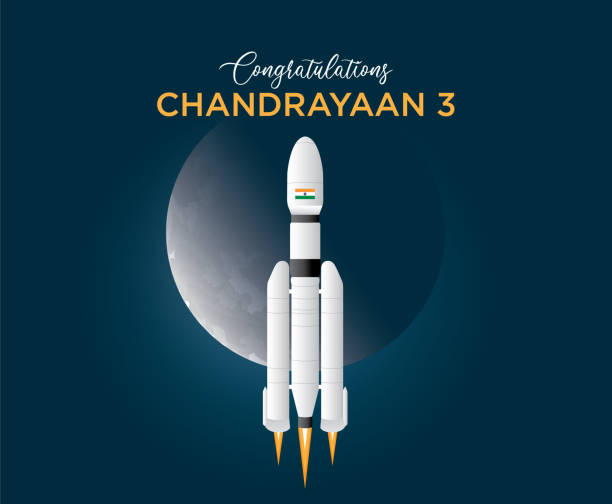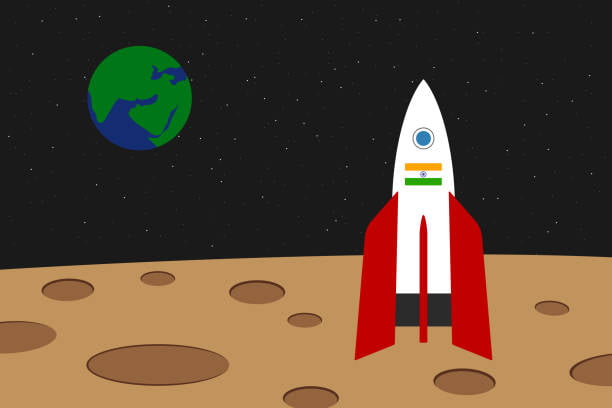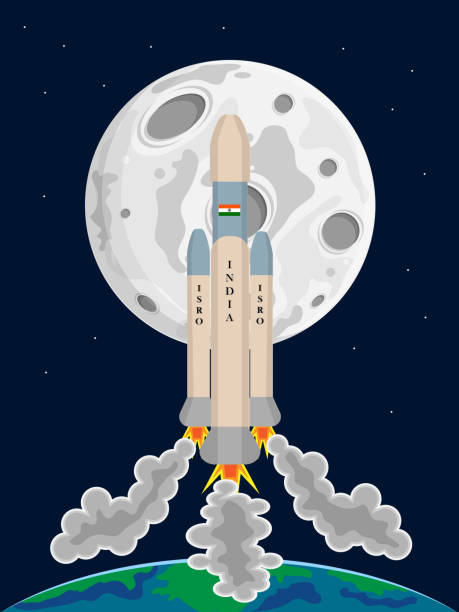In a historic achievement, India has transformed into the essential country to land a rocket near the south pole of the moon successfully. The eminent circumstance, which spread out to the cheers of millions at watching parties the country over, marks a basic accomplishment in India’s space examination attempts. Sreedhara Panicker Somanath, the seat of the Indian Space Investigation Affiliation (ISRO), readily communicated, “India is on the moon,” as the Chandrayaan-3 space device’s Vikram lander landed, presenting a world-first accomplishment in space examination.

A Fundamental Leap for India’s Space Wants
The productive lunar landing implies India’s capacity for space advancement as well as mirrors its fundamental objective to enliven interest in classified space dispatches and satellite-based associations. This achievement has gotten the innovative brains of people across India, who adhered to their television screens as the rocket meandered into the little-explored lunar south pole region, acknowledged to hold significant stores of frozen water and important parts.
Top State Pioneer Modi’s Celebration and Vision
Top state pioneer Narendra Modi, who saw the event from South Africa while going to the Brics zenith, waved the flag in celebration and articulated, “This is a victory cry of another India. We are seeing history.” For certain, a surge of worried energy held Indians in the days preparing for the booked dive. Safe havens and mosques coordinated excellent petitions for a safeguarded landing, and in Varanasi, Hindu clerics gave gifts to the mission while blowing conch shells.
Somewhat recently
Somewhat recently, the lander executed an incredible move, decelerating from an amazing 3,730 miles per hour to nothing and transforming from a level to a nearly vertical position. The precision of this move was crucial, as a great deal of force would have provoked a horrible cutdown, while too little power could have achieved a slanted landing. It was an outline acquired from India’s past moon mission in 2019, when the lander failed to execute this fundamental move, provoking an unbeneficial mission.

Chandrayaan-3’s Journey and Coherent Objectives
Chandrayaan-3, which signifies “moon make” in Sanskrit, set out on its journey from Sriharikota in southern July 14. Not at all like the Apollo missions of the 1960s and 1970s, which showed up on the moon rapidly, the focal objective took longer on account of the use of less solid rockets. The test surrounded Earth on various occasions to procure the essential speed before setting out on its lengthy lunar bearing.
The Occupation of Wanderer Pragyaan
If all goes true to form, a wanderer named Pragyaan, implying “smarts” in Sanskrit, will slide from the lander and explore the moon’s surface for a long while. Furnished with the ability to get pictures, lead land examinations, and investigate the presence of water ice, Pragyaan’s principal objective is of staggering significance. The exposure of water ice in huge amounts could plan for future missions to spread out bases on the moon, as oxygen and fuel can be used. Scientists believe that the moon’s south pole, with its pits and channels, may hold the best responsibility for such endeavors.
India’s Space Achievement Amidst Overall Competition
India’s productive lunar landing comes intently following Russia’s new frustration in its lunar mission, as its Luna-25 rocket went wild and crashed during its undertaking to show up at the moon’s south pole. Russia referred to a shortfall of dominance due to the drawn-out break in lunar assessment following the last Soviet mission to the moon in 1976.
India’s Ascending on the Overall Stage
While the US, the past Soviet Affiliation, and China have as of late achieved fragile appearances on the moon, India’s accomplishment at the South Pole is an enormous forward jump. As a nuclear-prepared country and the world’s fifth-greatest economy, India is restless to show its creative and space limits under the drive of top-state pioneer Modi. This achievement lines up with Modi’s vision of India as an emerging overall amazing powerhouse, really supporting his commonness before a significant general political race one year from now.
The overall space race heats up.
The assumption and energy enveloping this productive lunar landing have filled just after Russia’s mishap, and as India’s nearby adversary, China continues to show up at new accomplishments in space examination. In May, China shipped off a three-man bunch for its circumnavigating space station and means to send space voyagers to the moon before the decade’s end. India’s achievement isn’t simply a show of its mechanical capacity; it’s more of a basic move toward the overall space race, displaying the country’s confirmation to explore the universe and broaden its presence past Earth.

Ends
With everything taken into account, India’s important lunar showing up at the moon’s south pole tends to be a weighty leap in the country’s space exploration adventure. It addresses not solely India’s mechanical limits but also its fundamental cravings in the area of room. With this achievement, India has firmly laid the groundwork for itself as a focal point in the overall space race, opening up extra-open doors for lunar investigation and anticipated future missions. As the world watches India’s move in the field of room examination, it features the country’s confirmation to research and conquer the universe.
FAQS
Q1: What is going on with India’s moon showing up at the moon’s south pole?
A1: India’s lunar showing up at the moon’s south pole is a remarkable achievement as it signifies the key productive showing up in this troublesome and little-researched district of the moon. It shows India’s mechanical limits and key arrangements in space examination.
Q2: When did India’s lunar landing happen?
A2: India’s lunar landing, finished by the Chandrayaan-3 space contraption’s Vikram lander, happened on a significant day not long after 6 p.m. area time.
Q3: What were the objectives of this lunar mission?
A3: The fundamental objectives of Chandrayaan-3 were to research the moon’s south pole, focus on its geology, search for water ice, and collect significant data for future lunar missions, including the potential for spreading out a base.
Q4: What is the occupation of the drifter Pragyaan on this mission?
A4: Vagabond Pragyaan, meaning “smarts” in Sanskrit, accepts a fundamental part in the mission. It is planned to examine the moon’s surface, get pictures, lead land dissects, and investigate the presence of water ice.
Q5: Why is the water ice on the moon so huge?
A5: Water ice on the moon is crucial for future lunar examination. Isolating oxygen and fuel makes it a critical resource for likely keeping up with missions, and the underpinnings of lunar bases can be used.

Wow Thanks for this information i find it hard to locate excellent guidance out there when it comes to this subject matter appreciate for the guide site
Wow Thanks for this content i find it hard to see exceptional ideas out there when it comes to this content thank for the publish site
Wow Thanks for this publish i find it hard to get a hold of awesome information out there when it comes to this subject matter appreciate for the write-up website
Wow Thanks for this site i find it hard to see smart answers out there when it comes to this material appreciate for the review site
Wow Thanks for this posting i find it hard to stumble on great material out there when it comes to this content appreciate for the thread site
Wow Thanks for this site i find it hard to discover exceptional resources out there when it comes to this content appreciate for the site website
Wow Thanks for this guide i find it hard to discover decent ideas out there when it comes to this topic appreciate for the write-up site
Wow Thanks for this post i find it hard to obtain decent content out there when it comes to this subject material thank for the blog post website
Wow Thanks for this thread i find it hard to unearth extremely good info out there when it comes to this blog posts thank for the article site